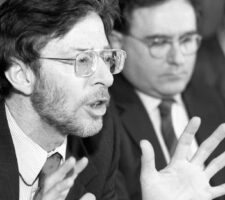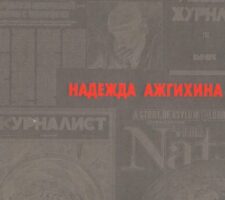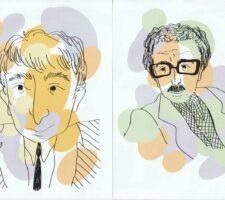Stephen Cohen was an active participant in the democratic changes in Russia, and he will always be remembered as such.
The Nation, by Nadezhda Azhgikhina
Without Stephen Cohen, it is impossible to imagine perestroika Moscow. He attended rallies and meetings of former Gulag prisoners, participated in public debates and scholarly symposia, spoke out with equal passion at forums and at friends’ homes, and he talked and talked with everyone – the “architects of perestroika,” young journalists, people on the street.
Without his figure, constant cigarette, and light accent, the picture of the era would be deficient. Without the evenings he and Katrina spent with friends, Russians and Americans, the perception would be inadequate of the atmosphere of mutual openness, the passionate desire on both sides to end the Cold War, to start a new path of cooperation and to be free of the Sword of Damocles of nuclear confrontation.
Without his publications in the magazine Ogonyok, the history of independent journalism and the history of understanding our past and present would be incomplete.
Cohen’s significance in historical scholarship is not solely about his important contribution to the Western academic community through his biography of Bukharin—and other figures in the early Soviet leadership who were opposed to Stalin. Just as important was his study of the nature of Stalinist and post-Stalinist repression, bringing the true faces and voices of Gulag prisoners to the world, as well as the faces of the Soviet dissidents with whom he lived side by side for many months throughout his long professional life.
He taught young historians the methodology and approaches of Western research, which gave many of them new perspectives and brought them into the international scholarly community. He documented daily life and was one of the first to have access to decades of closed archives. But most importantly, he was part of the process of democratization and liberation from the Stalinist legacy. His significance is not only in that he helped establish the Gulag Museum and that he supported many former prisoners and their families, whom he had met back in the Brezhnev era of “stagnation.” He essentially offered a new language for talking about the past, reasoned and factual, and he formulated the need for a fundamental evaluation of the past, together with Soviet writers, journalists, and activists.
I think his articles and formulations helped politicians, including Gorbachev, to articulate their own positions more clearly about the past, at least until 1989. Cohen, like many romantics of perestroika, was profoundly idealistic. He believed in Bukharin. He believed in the possibility of socialism with a human face, and I think he kept that faith throughout his life.
Millions of Soviet people shared that faith in the late 1980s. I remember the flood of letters to Ogonyok after the publication of Bukharin’s famous “last letter” warning of Stalin. Elderly people, frontline soldiers, former prisoners, bosses, and the most ordinary people wrote to say that they had been waiting for this publication all their lives. Young people wrote that they had finally seen meaning and direction. That glasnost period passed rather quickly, and many political figures tried to erase its achievements, but Steve always remembered. He kept his faith in the possibility of preventing a new Cold War and nuclear catastrophe, which he wrote about frequently in recent years.
I used his book The Victims Return in my curriculum at journalism school, and I am pleased that 20-year-olds studied it with great interest and then used it in their subsequent work on Russian history and the problem of historical memory.
Stephen Cohen was an active participant in the democratic changes in Russia. He will always be remembered as such.
Translated by Antonina W. Bouis


